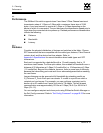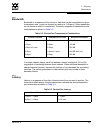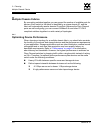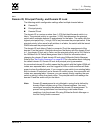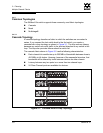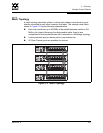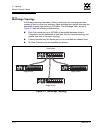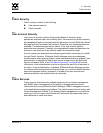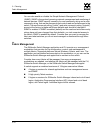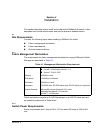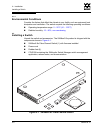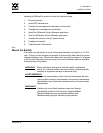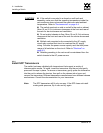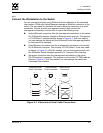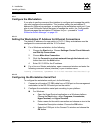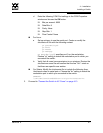
3 – Planning
Fabric Management
3-12 59042-06 A
0
You can also enable or disable the Simple Network Management Protocol
(SNMP). SNMP is the protocol governing network management and monitoring of
network devices. SNMP security consists of a read community string and a write
community string, that are the passwords that control read and write access to the
switch. The read community string ("public") and write community string ("private")
are set at the factory to these well-known defaults and should be changed if
SNMP is enabled. If SNMP is enabled (default) and the read and write community
strings have not been changed from their defaults, you risk unwanted access to
the switch. SNMP is enabled by default. Consider how you want to manage the
fabric and what switches you do not want managed or monitored through other
switches.
3.6
Fabric Management
The SANsurfer Switch Manager application and CLI execute on a management
workstation that provides for the configuration, control, and maintenance of
multiple fabrics. Supported platforms include Windows, Solaris, and Linux. The
application can be installed and executed on the workstation, or you can run the
SANsurfer Switch Manager web applet that is resident on the switch.
Consider how many fabrics will be managed, how many management
workstations are needed, and whether the fabrics will be managed with the CLI,
SANsurfer Switch Manager, or the SANsurfer Switch Manager web applet.
A switch supports a combined maximum of 19 logins reserved as follows:
4 logins or sessions for internal applications such as management server
and SNMP
9 high priority Telnet sessions
6 logins or sessions for SANsurfer Switch Manager inband and out-of-band
logins, Application Programming Interface (API) inband and out-of-band
logins, and Telnet logins. Additional logins will be refused.



